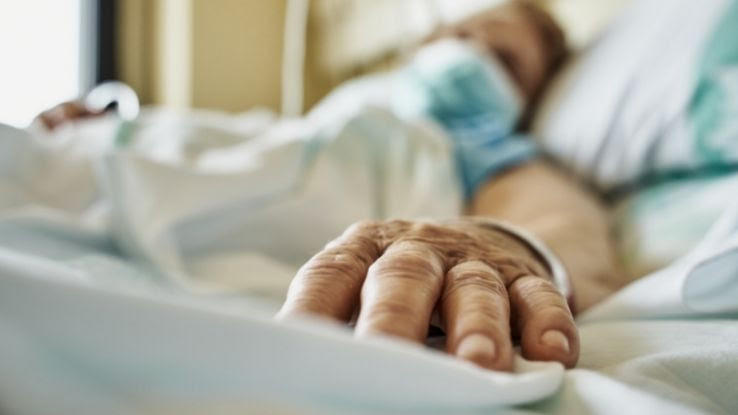The 10-Second Trick For Pacific Prime
The 10-Second Trick For Pacific Prime
Blog Article
7 Simple Techniques For Pacific Prime
Table of ContentsHow Pacific Prime can Save You Time, Stress, and Money.4 Simple Techniques For Pacific PrimePacific Prime Can Be Fun For EveryoneThe Only Guide to Pacific PrimeIndicators on Pacific Prime You Should Know

This is due to the fact that the information were accumulated for a period of solid economic performance. Of the estimated 42 million people who were without insurance, almost about 420,000 (about 1 percent) were under 65 years old, the age at which most Americans come to be eligible for Medicare; 32 million were adults between ages 18 and 65, around 19 percent of all grownups in this age team; and 10 million were kids under 18 years old, about 13.9 percent of all children (Mills, 2000).
These estimates of the variety of persons uninsured are generated from the yearly March Supplement to the Present Population Survey (CPS), performed by the Demographics Bureau. Unless otherwise noted, national price quotes of individuals without health and wellness insurance coverage and percentages of the population with different sort of insurance coverage are based on the CPS, one of the most commonly made use of source of price quotes of insurance protection and uninsurance rates.
The smart Trick of Pacific Prime That Nobody is Talking About

Still, the CPS is particularly useful due to the fact that it generates yearly price quotes fairly rapidly, reporting the previous year's insurance protection estimates each September, and due to the fact that it is the basis for a regular set of estimates for greater than two decades, permitting for evaluation of fads in insurance coverage gradually. For these factors, along with the substantial use of the CPS in various other studies of insurance protection that are provided in this report, we depend on CPS quotes, with limitations kept in mind.

The estimate of the number of without insurance people increases when a population's insurance standing is tracked for a number of years. Over a three-year period starting early in 1993, 72 million people, 29 percent of the united state population, were without insurance coverage for at the very least one month. Within a single year (1994 ), 53 million people experienced at the very least a month without protection (Bennefield, 1998a)
Six out of every ten uninsured adults are themselves employed. Although functioning does improve the probability that a person and one's family participants will certainly have insurance, it is not a warranty. Also participants of family members with 2 full-time wage income earners have practically a one-in-ten chance of being uninsured (9.1 percent without insurance rate) (Hoffman and Pohl, 2000).
A Biased View of Pacific Prime
New immigrants make up a significant percentage of people without health insurance coverage. One analysis has associated a substantial portion of the recent development in the size of the U.S. without insurance population to immigrants who showed up in the country between 1994 and 1998 (Camarota and Edwards, 2000). Current immigrants (those who concerned the United States within the past four years) do have a high rate of being uninsured (46 percent), but they and their youngsters account for just 6 percent of those without insurance country wide (Holahan et al., 2001).
The connection between health and wellness insurance and accessibility to care is well established, as recorded later in this chapter. The relationship in between wellness insurance and health and wellness end results is neither direct nor simple, an extensive medical and health and view wellness solutions research literature links wellness insurance coverage to improved access to care, far better top quality, and improved individual and population wellness standing.
Levels of evaluation for analyzing the impacts of uninsurance. It concentrates specifically on those without any kind of wellness insurance for any length of time.
8 Simple Techniques For Pacific Prime
The issues dealt with by the underinsured remain in some areas comparable to those encountered by the without insurance, although they are usually less severe. expat insurance. Uninsurance and underinsurance, however, involve distinctly various policy problems, and the methods for addressing them may vary. Throughout this study and the 5 reports to follow, the primary focus gets on individuals with no health insurance and therefore no support in paying for healthcare beyond what is offered with charity and safeguard organizations
Wellness insurance is a powerful element impacting invoice of care since both people and medical professionals react to the out-of-pocket rate of solutions - https://on.soundcloud.com/Boznd6XKBGjyrspT8. Medical insurance, nonetheless, is neither needed nor enough to acquire accessibility to clinical solutions. Nevertheless, the independent and direct impact of wellness insurance policy protection on access to health and wellness services is well developed.
Others will get the health care they need even without medical insurance, by spending for it out of pocket or seeking it from service providers that use treatment free or at extremely subsidized prices. For still others, health insurance coverage alone does not make certain receipt of care since of other nonfinancial obstacles, such as an absence of healthcare companies in their community, restricted access to transport, illiteracy, or linguistic and cultural distinctions.
Pacific Prime Fundamentals Explained
Formal research concerning uninsured populaces in the United States dates to the late 1920s and early 1930s when the Board on the Cost of Healthcare created a series of records about financing doctor workplace check outs and hospital stays. This issue ended up being significant as the varieties of clinically indigent climbed up during the Great Clinical depression.
Report this page